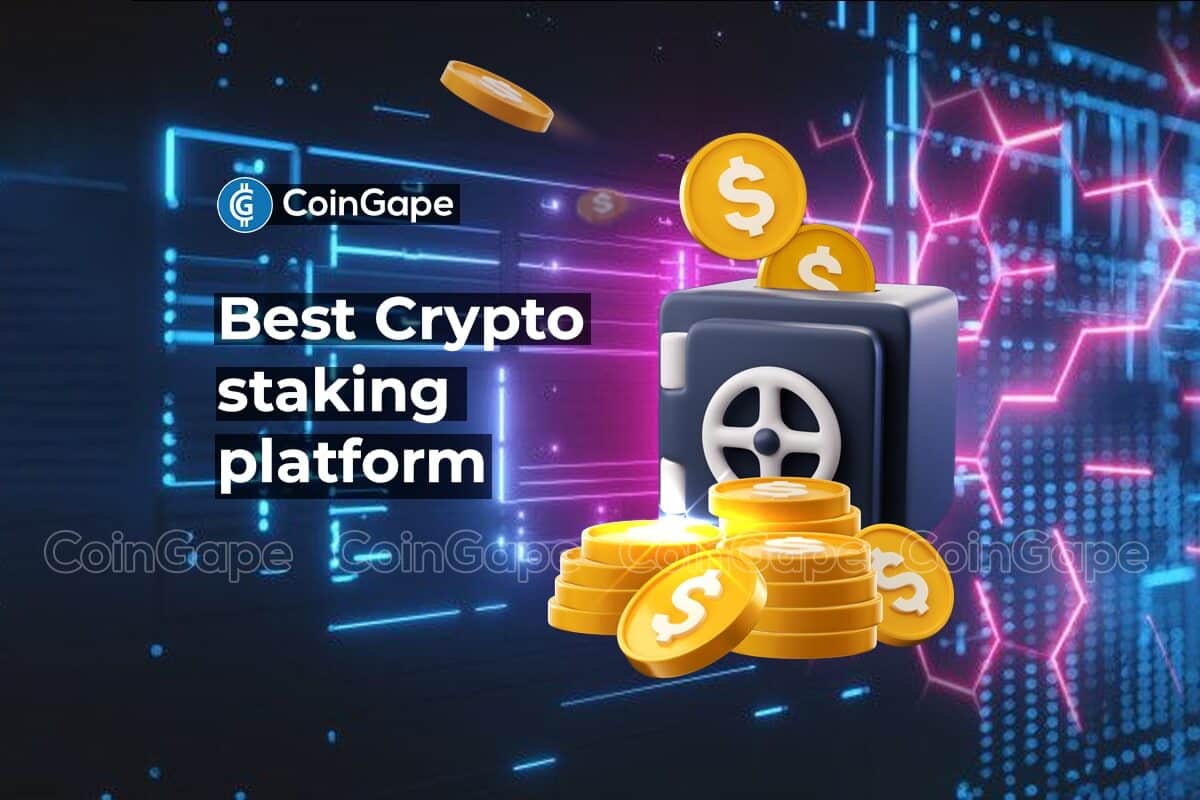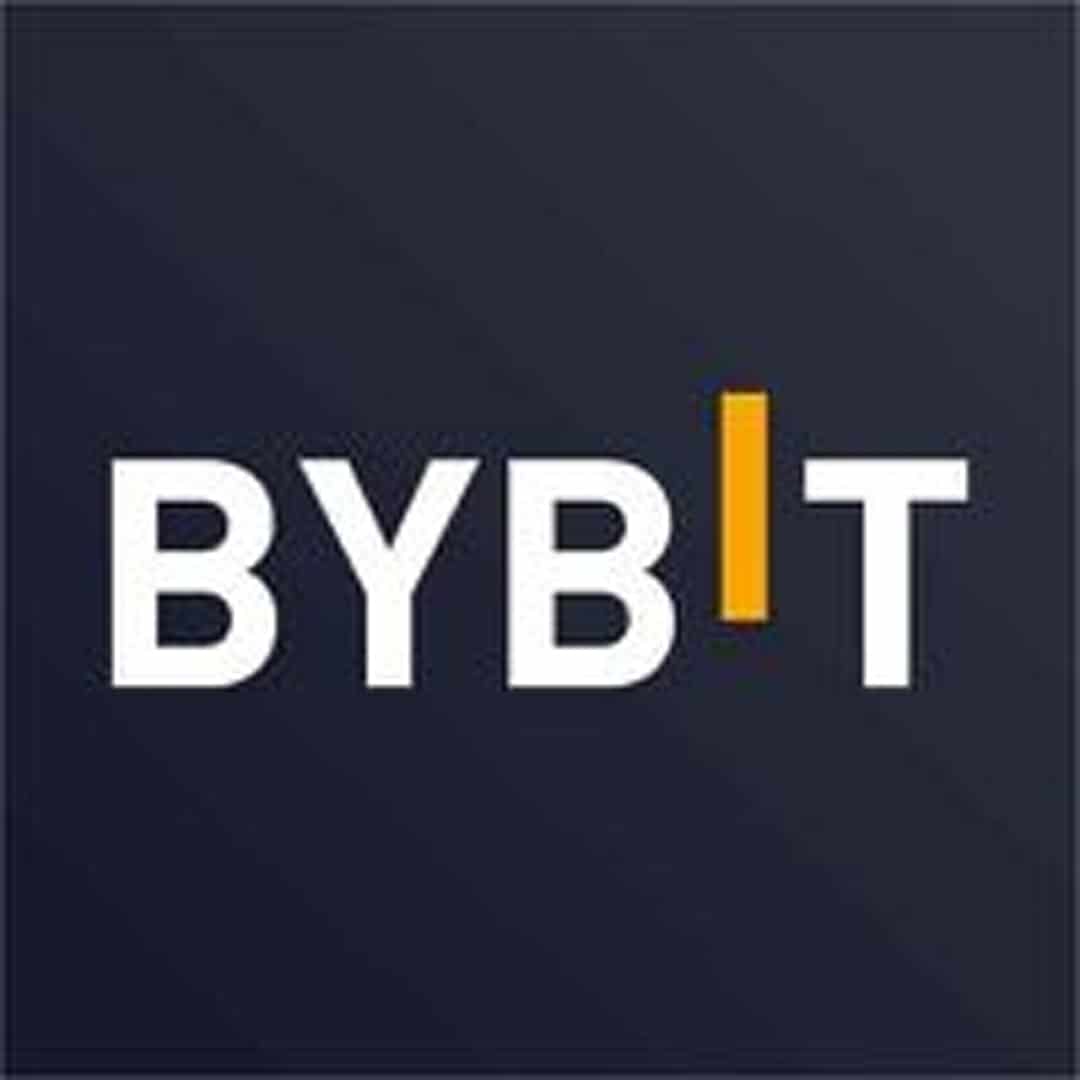DAILY NEWSLETTER
Your daily dose of Crypto news, Prices & other updates..

It’s time to make more from your investments with the best staking platforms. Imagine earning passive income from the coins you’re already HODLing while contributing to the blockchain ecosystem. Below, we’ll explain everything related to the top staking platforms, maximizing rewards, and how crypto stalking works with each recommended platform.
| Platform Name | Supported Cryptocurrencies | APY | Payout frequency | Rating | |
|---|---|---|---|---|---|
| 100+ | 0.5% - 20% for locked staking, over 100% for DeFi staking | Daily | 4.5 | Visit | |
| 150+ | 0.2% - 65% | Daily or weekly | 4.5 | Visit | |
| 170+ | 0.05% - 18% | Daily | 4 | Visit | |
| 4 | 3% - 7% | Monthly | 4 | Visit | |
| 25+ | 0.15%- 26% | Twice a week | 4 | Visit | |
| 80+ | 0.7% - 14% | Varies by staking type | 4 | Visit | |
| 40+ | 2.79% - 5.15% | Daily | 3.5 | Visit | |
| 50+ | 0.05% - 51% | Weekly | 4.5 | Visit | |
| DASH, DFI | 0.01% - 22.9% | Every 12 hours | 4.5 | Visit | |
| ETH | 3.1% average | Daily | 4 | Visit |
Let’s take a closer look with an in-depth review of the best cryptocurrency staking services. Together, we’ll break them down into the features, pros, cons, and why each makes the list. Below, you’ll find choices for newbies just starting their journey to advanced DeFi options with eye-catching rewards.

Binance has grown to become one of the best crypto exchanges in the crypto industry. This is a big deal as the company constantly showcases its ability to deliver a great platform coupled with high security. Cryptocurrency staking on Binance is a smooth and user-friendly experience.
The first thing you’ll notice right off the bat is that there are two options – locked staking or DeFi staking. Which one you choose depends on your appetite for risk and return. Locked stating requires you to lock your funds into a specific Binance wallet. This is then used to support and secure your chosen blockchain.
When you set up the staking, you’ll be able to choose the length of time to lock your funds – usually, the longer, the higher the rewards. DeFi staking on Binance takes the technicalities out of the process. You stake coins through smart contracts to a specific DeFi project for purposes like adding liquidity. Returns can be higher, but there are increased risks of loss if a project fails during staking.

Coinbase is another leading crypto exchange that opens up crypto staking to its users. The platform has a stellar track record of security and auditing, especially now it is a publicly-traded company. The options have grown steadily in recent years allowing users to easily partake in securing proof-of-stake blockchains like Ethereum and Cardano in exchange for rewards.
You can start earning with as little as $1 of funds and manage your assets in the easy-to-use Earn center. The platform guides you through the entire process with simple-to-follow instructions. In just a few clicks, you can start earning attractive rewards on your crypto account from over 150 different assets.

Bybit’s Earn functionality gives crypto HODLers a smart way to grow their funds without the risks of trading. It brands itself as an investment product offering users a one-stop center to enjoy higher returns and greater flexibility. There’s locked staking which is designed to feel like earning interest on a fund like a traditional bank account.
While more complex choices like liquidity staking open the door to higher returns for more advanced users. ByBit has nearly 170 cryptocurrencies available for cryptocurrency staking rewards, and it offers different reward structures for many of them, so new crypto owners have flexibility in how they earn income.
Uniquely, ByBitlets users can earn income on Bitcoin, and it charges no fees. Unfortunately, Americans are not legally able to open an account here, however, nor are residents of the U.K., France, or mainland China.

eToro is a comforting name for investors who have moved from traditional products to the world of crypto. The platform is a trusted, accessible, and intuitive brand in the investment world. eToro empowers users to both buy and stake crypto assets using its dedicated service. So investors can sit back and watch their holdings grow.
To stake on eToro you simply need to proactively opt in. So all you need to do is hit the ON switch in the account settings. Then staking rewards are automatically distributed to users who hold staking supports crypto on the platform. Although those are more limited than competitors Cardana, Solana, Ethereum, and Tron are the only options currently. Rewards are automatically distributed each month after eToro takes a percentage as a fee, often as high as 45%.

Kraken has been at the forefront of crypto for over a decade, growing to 9 million clients in 190 countries. Its flawless execution of crypto trading and offer staking features coupled with industry-leading security means users continue to flock to the platform, including institutions.
Now, users can earn some of the best crypto staking rewards of up to 26% in a few clicks. Plus, there are special cryptocurrency staking pools for users to earn through adding liquidity to decentralized crypto exchanges (DEX).
The interesting thing about Kraken is its institutional offering. Companies holding crypto can participate in staking with a specific enterprise solution. There’s access to 25+ proof of stake assets with fixed percentage yields for institutions with $500k+ worth of crypto.

Kucoin has been in operation since 2017 and is one of the most popular crypto platforms thanks to its diverse access to crypto assets, a wider choice than competitors like Binance and Coinbase. The platform offers brilliant earning options from crypto staking. Kucoin Earn which gives users features like interest on savings and lending, along with DeFi products like staking. The platform is relatively user-friendly but tends to suit advanced users over beginners.
Once registered, users can access the savings product where they can earn compound interest on several crypto assets including Bitcoin. At the click of a button, funds will be earning passive income with crypto. DeFi staking is also available for higher rewards, often over 20% APR. This process involves coins being staked for a predetermined period. During that time, users can still trade staked assets in the liquidity trading market for added flexibility.

Gemini is a US-backed crypto platform famously founded by Cameron and Tyler Winklevoss which in recent years has added HQs in Europe to improve its international offering including Ireland and France.
It offers staking with two versions – Staking and Staking Pro. The regular staking products allow users to get going with no minimum amount. Ethereum, Solana, and Matic are among the 40 available coins to earn and stake your crypto with competitive commission fees at 15% of rewards. This basic staking function is accessible and easy to use but the rewards aren’t so spectacular. One major downside is the lack of availability to UK citizens.
Staking Pro is an advanced product for customers who require more control over staked cryptocurrency along with on-chain transparency. It’s an Ethereum staking product requiring a minimum of 32ETH. It enables users to run a personal validator rather than a pooled validator. Plus, it is available in the UK.

Crypto.com is a user-friendly one-stop shop for your crypto needs. It serves as an on-and-off ramp to quickly switch between fiat and cryptocurrencies. It’s a super platform that provides a secure and easy-to-use app for buying and earning with crypto.
The company is always investing heavily in research and development to improve the experience of using crypto on your phone. Earn section of the platform allows users to gain significant rewards on their holdings, sometimes as much as 50% on its native token CRO. Adding to this, there are dozens of other major tokens ready to earn and stake at a touch.
Adding to this, DeFi functionality (including a DeFi wallet) even offers liquid staking and ETH through integration with protocols like EigenLayer. Of course, APR can vary wildly over time with these innovative staking protocols, so it’s best to do some research before committing a large amount of funding.

Bake is a staking, leading, and liquidity pool platform based in Singapore. It facilitates several interesting investing strategies with handsome rewards. Its popularity is such that over one million users actively enjoy the investment services that connect to the DeFi ecosystem. Users or ‘bakers’ can loan or free assets to provide liquidity and stake them in crypto exchanges for rewards.
The staking process on Bake enables investors to earn rewards for committee coins to validator nodes to help secure proof of stake blockchains. With no minimum start amount and the ability to withdraw assets at any time, it offers ultimate flexibility. Plus, rewards are paid out every 12 hours with up to 22.9% in APR. Although, Bake does grab a 15% commission fee on rewards. The staking service is accessible using DASH or DFI coins, although wider earning services like lending and liquidity mining work with a much larger asset selection.

The Lido protocol is a leading staking as a service platform. It has rapidly grown to become the largest protocol by Total Value Locked on Ethereum at over $20 billion. This success is attributable to its accessible staking, allowing users to access Ethereum staking without technical knowledge or the 32 ETh needed to run a personal validator.
Lido provides an innovative approach to earning passive crypto through liquid staking. This method allows users to stake assets while retaining liquidity. So, investors receive a derivative token (stETH), which represents their assets. This token can then be used in other DeFi apps – including earning additional yields or trading without waiting for the staking period to end.
It helps fix the liquidity problem of funds being locked to a blockchain, meaning users are stuck with an investment or miss opportunities elsewhere. The fees are attractive too, at just 10% of rewards, although it is limited to Ethereum staking and reward structure.
Staking is a great way for cryptocurrency holders to earn passive income on their coins. Certain blockchains allow you to ‘stake’ or lock your crypto to the network in exchange for rewards. These blockchains use a ‘proof-of-stake’ protocol, which is a way of verifying new transactions, preventing double-spending, and securing the network.
To do this, network participants need to ‘stake’ crypto. In return for staking tokens to the networks, users are rewarded anywhere between 3% and 10% annually on their staked tokens.
Staking crypto benefits long-term investors looking for a consistent way to ‘put their coins to work’ without the risks of market trading or complexities of cloud mining. It’s a passive mode of earning money, similar to earning interest on a traditional bank account. Many top blockchains like Ethereum and Solana use this system to operate their networks.
Staking rewards come from the transaction fees on the blockchain; plus, they can also come through token inflation rates when the network mints new tokens. The funds generated through these methods are then distributed to stakers as an incentive for their participation in the network. The payout for staking varies from blockchain to blockchain, so it’s worth researching the best crypto to stake for the highest APY to improve your returns.
Not all staking platforms are born equal. There are all sorts of innovative solutions popping up to make money with crypto, all with varying levels of difficulty. Below, we’ll look at the most common staking methods.
The best crypto exchanges often offer staking of the major cryptocurrencies. So you can easily buy and trade coins before staking them from the same account and wallet. You can do it all in a couple of clicks. Very easy for beginners to get started. For example, Binance and Coinbase both offer these features within their platforms.
DeFi is an innovative way to build financial products and that includes staking features. The platforms are run using smart contracts and protocols and are governed by a decentralized group. Often, this is a combination of developers and special governance token holders.
The staking methods can be more complex to understand but deliver the highest APY digital assets, more choice, control of funds, and flexibility. Bake and Aave are great examples of this.
A custodial staking pool is where you join other token holders to combine funds and stake directly to a blockchain as a single entity. It helps to remove middlemen and reduce costs without the complexity of operating your own node. The downside is you’ll need to hand custody of your tokens to the pool.
Liquid staking pools were developed to help solve the problem of locked liquidity and tokens when engaged in staking. It operates in the same way as normal staking, but the pools provide you with a ‘liquid’ token.
This can then be used elsewhere to trade or take advantage of other opportunities in the DeFi world. It’s a handy way to maximize returns.
Several proof-of-stake blockchains let you place your funds directly with an individual validator – a person or institution running a validator node. It’s an easy way to earn the best staking rewards but retain custody of tokens inside your wallet. Polygon allows users to delegate funds in this fashion.
The most technical but direct way to stake is by running your own validator node. It needs a lot of technical knowledge but you can also start recruiting stakers or ‘delegators’. They send you tokens to stake on their behalf and you collect fees in exchange.
Once you scratch the surface, choosing the best platform can become a little confusing. But don’t worry; next, we’ll break down the key factors to consider in your selection:
Security is paramount in all things crypto. After all, it doesn’t matter how your staking rewards are if your funds are hacked and stolen. Start by assessing the security protocols and history of a platform. Centralized crypto exchanges should have well well-known trusted reputations with clear policies on storage and encryption.
Decentralized platforms have an inherent risk of smart contracts containing vulnerabilities or bugs. New projects should be approached with caution until they have been rigorously tested by the DeFi community.
We’re all here to make our crypto work a little bit harder. So, the next step is understanding how much you can earn and finding the highest APY cryptos. Platforms will offer either a guaranteed or projected annual percentage yield (APY). Guaranteed rates tend to be lower and require strict locked staking periods.
At the same time, more projected rates fluctuate with market conditions but can be higher with short periods and flexible parameters. Reward structures also vary between assets. So, research which assets and platforms are offering the most attractive rates for your crypto portfolio.
None of this comes for free, although you should never pay anything upfront. Instead, platforms take a percentage of rewards you earn as payment. Depending on the platform, these can vary from 10% up to 45%. Anything around 15% is considered a good deal.
DeFi projects often have lower fees, while more sophisticated ‘beginner’ friendly exchanges can get expensive. For example, eToro is easy to use but can charge 45% fees for some staking program, while Lido finance comes in at 10%.
A critical point if you are new to the staking game. Things can get complicated quickly, particularly if you’re required to execute technical procedures directly on the blockchain. The best staking crypto platforms all have an easy-to-use interface that makes staking your coins super easy. Beginner-friendly platforms like Binance enable you to stake in a couple of clicks. Crypto.com has one of the best crypto staking apps to use on phone. While eToro has an automatic feature that’s easy to use.
If you hold a particular cryptocurrency, like Ethereum or Solana, then it’s key to check that a platform supports the crypto you hold. For example, if you are holding Solana for a long-term investment, you want to avoid having to trade it for another asset to access staking functions.
Supporting staking assets should be clearly listed. Plus, you should note that not all assets can be staked. For example, the Bitcoin blockchain doesn’t have proof-of-stake functionality, so you can’t directly stake Bitcoin. However, other passive income methods have been developed in this situation.
Before you’re let loose on the staking world, there are a couple of risks to consider.
Yield isn’t always guaranteed. You’ll get an indicator of what you can expect to earn, but market conditions along with any efficient or slow validation, can add risk to these types of investment.
Misbehaving validators may be penalized and lead to something called slashing. More commonly, yields can change based on the network demand and staked supply, so nothing is set in concrete.
Liquidity can be tricky. Often, there’s a ‘cool down’ period once the staking period has finished. This is a window in which your crypto cannot be traded. So, if you want to move quickly in the market, then staking is likely to slow you down.
Custody of your coins is also often relinquished during staking, creating security risks. Particularly if you’re using a centralized exchange you’ll need to trust the platform with your funds.
So you won’t be able to keep them safely in cold storage. That could leave you open to problems like hacks, fraud, or company insolvency – not impossible in the cryptoverse.
Crypto staking sites are an important part of the blockchain ecosystem. It is integral to the way many of them are built with proof-of-stake protocols used to validate and secure transactions. This is exciting for investors who can leverage a robust way to earn crypto rewards on their long-term crypto holdings.
There’s a lot to understand as the industry continues to innovate and develop new ideas. Choosing a strong staking platform is particularly important for newbies to make sure they are working in a secure, trusted environment. Plus, a broad range of rewards and asset classes will be useful as the journey continues.
Major exchanges like Binance and Coinbase offer quick access to staking, while Kraken delivers add options for institutions, and Bake opens up steps into DeFi. Careful selection of the right platform helps to optimize returns while playing a crucial role in the growth and security of blockchain technology.
While it is generally considered safe, it’s important to remember that cryptocurrency investments carry inherent risks. Be sure to do your research and only stake what you can afford to lose.
Staking rewards change based on the blockchain and platform. Commonly, they range from 3% to 11% but can be boosted to over 100% APY in certain situations.
Tether is the leading stablecoin, with some platforms offering up to 4%. USDC is often available to stake at around 2-3% rewards, while DAI is a DeFi stablecoin that can stake at about 5%.
If you’re a long-term crypto holder of a proof-of-stake asset, then it is absolutely worth it. It enables you to earn interest and rewards on your holdings without the need to make risky trades or investments.
coinpress prepared a review methodology to rate crypto exchanges, tools, and apps. We curated a list of metrics to evaluate crypto platforms based on their services, user experience, security and customer support, payment gateways and charges, pricing and promotions. Visit our Review Methodology page to learn more about how we review each crypto platform.
This content is purely for educational purposes and should not be considered as financial advice. Do your own research before investing in any crypto platform and only invest the amount you can afford to lose.

DAILY NEWSLETTER
Your daily dose of Crypto news, Prices & other updates..